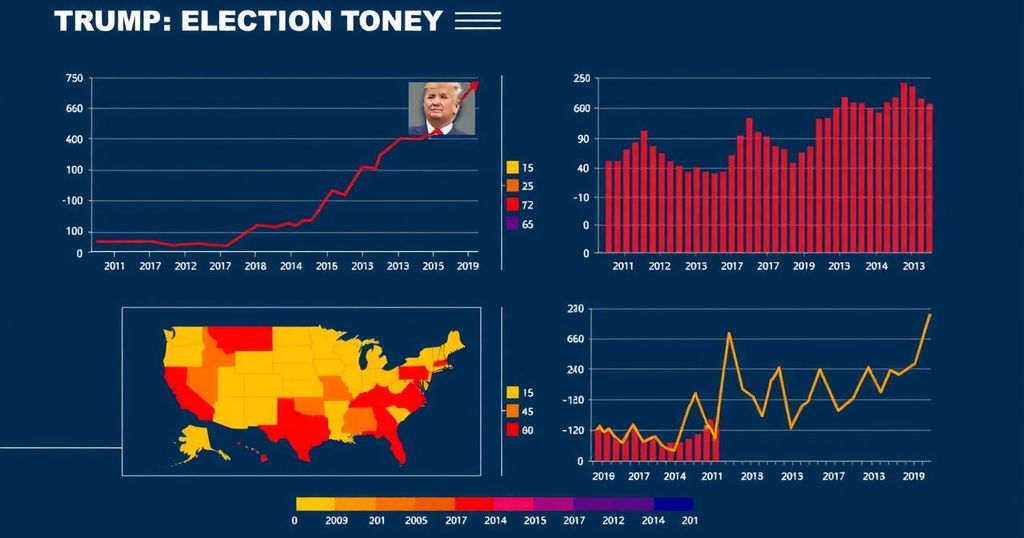Analyzing Donald Trump’s Electoral Triumph: Key Factors and Future Implications
Donald Trump’s victory in the recent election was driven by key factors including President Biden’s low approval rating and negative consumer sentiment due to inflation. While Vice President Harris improved slightly among certain demographics, Trump saw broad gains across various groups, particularly among Latino men and in suburban areas. However, Republicans are cautioned against overconfidence given the narrow margins of victory and historical patterns of voter behavior.
In analyzing the reasons behind Donald Trump’s electoral success, it is important to consider the political landscape in which Vice President Kamala Harris operated. Her campaign was significantly hampered by President Joe Biden’s low approval rating, which was recorded at 39%. Historical patterns indicate that presidents seeking reelection with approval ratings below 50% tend to lose—a rule that proved effective in this election cycle. Additionally, consumer sentiment, as reflected in the University of Michigan’s consumer sentiment survey, showed Biden’s rating at 70.1, marking a decline from previous elections where presidents with ratings above 82 enjoyed electoral victories. Moreover, inflation emerged as a critical factor affecting approval ratings globally, impacting leaders across the G-7 nations. Notably, before the election, even the highest approval ratings among these world leaders did not surpass Biden’s, illustrating the widespread discontent among the electorate, which ultimately culminated in Trump’s victory. While Harris did manage to improve upon Biden’s performance in certain demographics—gaining support among Black women and college-educated white voters—Trump’s improvements across a broader spectrum of demographics were more pronounced. Specifically, Latino male voters made a dramatic shift, moving from backing Biden by 23 points to supporting Trump by 12 points. Furthermore, Trump’s standing among younger voters improved significantly, marking the best results for a Republican in this group in two decades. In rural America, Trump increased his lead, doubling his margin from 15 to 30 points. His performance in suburban areas also saw a notable shift where, contrasting with Biden’s 2020 gains, Trump was able to win these regions by four points. Although many suburban voters prioritize abortion rights, they did not allow this issue to dictate their presidential vote, as evidenced by an even split between Trump and Harris. Despite the apparent victory, it is essential for Republicans to recognize that this election was not characterized by overwhelming landslide victory akin to those of Nixon or Reagan. The anticipated popular vote difference is marginal, highlighting the precarious nature of electoral support. Voter behavior has proven unpredictable through the 21st century, with multiple party flips in both congressional and presidential elections. Should Trump deviate from voter expectations or fail to address key issues, there exists a viable pathway for Democrats to regain influence in upcoming elections. Consequently, Republicans must proceed with caution, recognizing the evolving and sometimes fickle landscape of voter sentiments.
This article explores the dynamics of Donald Trump’s victory in the recent election, focusing on the key factors that influenced voter behavior. It examines the backdrop of the political environment, particularly President Joe Biden’s low approval ratings and economic challenges, as well as consumer sentiment concerning inflation. The analysis investigates demographic shifts in support for Trump and Harris, emphasizing the importance of suburban and rural voter sentiments. Furthermore, the article cautions against overconfidence in the Republican victory, highlighting historical patterns of fluctuating voter allegiance.
In conclusion, Donald Trump’s electoral success can be attributed to several key factors, including lower approval ratings for President Biden, deteriorating consumer sentiment, and significant gains among specific demographic groups. Although Harris made some improvements in various sectors, Trump’s broad-based electoral appeal proved decisive. Nevertheless, this narrow electoral victory calls for caution among Republicans, as ascertaining sustained support from a finicky electorate is paramount to future success. The potential for Democratic resurgence remains feasible if Trump fails to meet voters’ expectations during his term.
Original Source: www.usnews.com




Post Comment